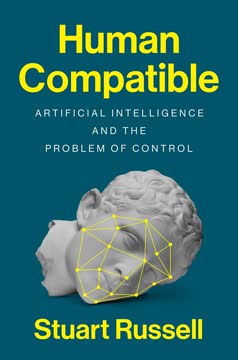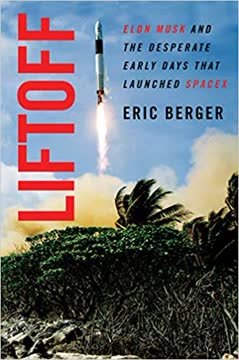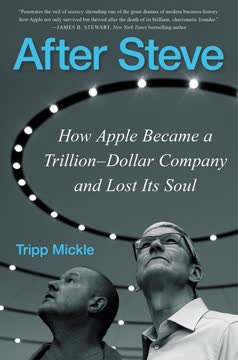Key Takeaways
1. Elon Musk's vision for Tesla: From luxury sports car to mass-market electric vehicles
"In keeping with a fast growing technology company, all free cash flow is plowed back into R&D to drive down the costs and bring the follow on products to market as fast as possible."
Bold vision. Elon Musk's plan for Tesla was audacious from the start. He aimed to disrupt the century-old automotive industry by creating a new category of vehicles: high-performance, desirable electric cars. The strategy was clear:
- Start with a high-end sports car (the Roadster) to prove the concept
- Use profits to develop a luxury sedan (Model S)
- Leverage that success to create an affordable mass-market vehicle (Model 3)
Challenging industry norms. Musk's approach broke from traditional auto industry practices:
- Vertical integration: Tesla aimed to control more of its supply chain
- Direct sales model: Bypassing dealerships to sell directly to consumers
- Continuous innovation: Rapid development cycles and over-the-air software updates
- Environmental mission: Positioning electric vehicles as a solution to climate change
2. Tesla's early struggles: Funding challenges and production hurdles
"Either they become a niche manufacturer like Porsche or Maserati and make 50,000 high-end cars annually, or they crack the code on a $30,000 car that would put them on the inflection point of a large industrial."
Financial tightrope. Tesla's early years were marked by constant financial peril:
- Multiple near-bankruptcies, often saved by last-minute funding rounds
- Musk investing much of his personal fortune from PayPal into the company
- Skepticism from traditional auto industry and financial analysts
Production challenges:
- Difficulties in scaling up from hand-built Roadsters to mass-produced Model S
- Supply chain issues and quality control problems
- Learning curve in automotive manufacturing processes
The company's survival often hinged on Musk's ability to secure funding and his willingness to bet everything on Tesla's success. This period established Tesla's reputation as a high-risk, high-reward investment.
3. The Model S: A breakthrough in electric vehicle design and performance
"The Tesla Model S is here, and it is the most important vehicle of the century."
Game-changing vehicle. The Model S revolutionized perceptions of electric cars:
- Long range: Over 200 miles on a single charge
- High performance: Acceleration rivaling sports cars
- Luxury features and cutting-edge technology
Industry recognition:
- Motor Trend Car of the Year
- Consumer Reports' highest-ever rating for a car
The Model S proved that electric vehicles could compete with and even surpass traditional luxury cars in terms of performance, style, and desirability. It established Tesla as a serious player in the automotive industry and set a new standard for electric vehicles.
4. Musk's leadership style: Innovation-driven but often tumultuous
"I'm going to spend a fucking billion dollars to overturn the dealer franchise laws in America."
Visionary but volatile. Musk's leadership was characterized by:
- Ambitious goal-setting and willingness to challenge industry norms
- Hands-on involvement in engineering and design decisions
- Rapid decision-making and pivots based on new information or ideas
Controversial aspects:
- Frequent clashes with executives and high turnover in senior positions
- Public outbursts and unconventional communication style, especially on Twitter
- Pushing employees to extreme limits, often working long hours himself
Musk's leadership style drove innovation but also created instability within the company. His ability to inspire and push for seemingly impossible goals was both Tesla's greatest asset and a source of constant turmoil.
5. Tesla's expansion: Gigafactory, SolarCity acquisition, and global market entry
"We need to show them what the integrated product looks like. They just don't get it."
Vertical integration. Tesla's growth strategy involved controlling more of its supply chain:
- Gigafactory: Massive battery production facility to reduce costs and ensure supply
- SolarCity acquisition: Expanding into solar energy and home battery storage
- Supercharger network: Building out charging infrastructure to support long-distance travel
Global expansion:
- Entry into European and Asian markets
- Plans for factories in multiple countries, starting with China
These moves aimed to position Tesla as more than just a car company, but as an integrated sustainable energy company. The expansion was risky and capital-intensive but crucial for achieving the scale needed for mass-market success.
6. The Model 3: Tesla's make-or-break moment for mainstream adoption
"This is what a dollar means," he told them. "It means a hundred more families, a hundred fewer internal combustion engines on the road, a hundred safer people, happier people that get the joy of owning a Model S."
Crucial milestone. The Model 3 represented Tesla's push into the mass market:
- Target price of $35,000 to compete with mainstream sedans
- Goal of 500,000 vehicles per year production rate
Challenges:
- Production ramp-up difficulties ("manufacturing hell")
- Balancing affordability with profitability
- Managing overwhelming demand and long wait times
The Model 3's success or failure would determine whether Tesla could transition from a niche luxury brand to a major automaker capable of accelerating the world's transition to sustainable energy.
7. Financial rollercoaster: Tesla's journey from near-bankruptcy to profitability
"I actually talked a close friend of mine into putting down $60,000 for a Tesla Roadster," the email said. "I cannot conscientiously be a bystander anymore and allow my company to deceive the public and defraud our dear customers."
Constant financial pressure. Tesla's financial history was marked by:
- Frequent capital raises through stock offerings and debt
- Periods of heavy cash burn during product development and production ramp-ups
- Skepticism from Wall Street analysts and short sellers
Path to profitability:
- Focus on higher-margin vehicle variants
- Improvements in manufacturing efficiency
- Strategic use of regulatory credits
Tesla's ability to achieve sustained profitability remained a key question for investors and a central challenge for the company's management.
8. Musk vs. the world: Battles with short sellers, regulators, and public perception
"Am considering taking Tesla private at $420. Funding secured."
Controversial figure. Musk's combative stance led to numerous conflicts:
- Ongoing feud with short sellers, often via Twitter
- SEC investigation and settlement over "funding secured" tweet
- Public spats with critics, including the "pedo guy" incident
Media relations:
- Eschewing traditional advertising in favor of viral marketing and PR stunts
- Cultivating a passionate fan base while also attracting vehement critics
Musk's behavior often overshadowed Tesla's achievements, creating additional challenges for the company in terms of public perception and regulatory scrutiny.
9. Manufacturing hell: Overcoming production challenges for the Model 3
"I just don't see a path—any path at all—to fixing it prior to start of production without a significant cost and schedule hit."
Production nightmare. The Model 3 ramp-up exposed Tesla's manufacturing inexperience:
- Overly ambitious automation plans that had to be scaled back
- Quality control issues and high scrap rates
- Struggles with battery pack production at the Gigafactory
Unconventional solutions:
- Building a production line in a tent to increase capacity
- Musk sleeping at the factory and micromanaging production details
- Rapid iteration and problem-solving on the fly
The "manufacturing hell" period nearly broke the company but ultimately forced Tesla to improve its production processes, setting the stage for future growth.
10. China gambit: Tesla's strategic move into the world's largest auto market
"Could there be a worse time to depend on China?"
Crucial expansion. Tesla's push into China was driven by multiple factors:
- Access to the world's largest electric vehicle market
- Potential for lower production costs
- Pressure to achieve greater scale and profitability
Challenges and risks:
- Navigating complex regulatory environment and trade tensions
- Building a factory at unprecedented speed
- Competition from local EV manufacturers
The success of Tesla's Shanghai factory would be critical for the company's global growth strategy and its ability to achieve sustainable profitability.
EPILOGUE
Key Takeaway Headers
- Tesla's impact on the automotive industry: Accelerating the shift to electric vehicles
- The future of Tesla: Autonomous driving, energy solutions, and beyond
Last updated:
FAQ
What's Power Play: Tesla, Elon Musk, and the Bet of the Century about?
- Tesla's Journey: The book chronicles Tesla's rise, focusing on the challenges and triumphs it faced in the electric vehicle market.
- Elon Musk's Vision: It explores Musk's ambition to revolutionize the automotive industry and his commitment to electric vehicles as a solution to climate change.
- Behind-the-Scenes Insights: Readers get an insider's perspective on Tesla's corporate culture, including conflicts, innovations, and strategies.
Why should I read Power Play: Tesla, Elon Musk, and the Bet of the Century?
- In-Depth Analysis: The book provides a comprehensive look at the complexities of launching a car company in a competitive industry.
- Understanding Musk's Leadership: It offers insights into Musk's unique leadership style and decision-making processes.
- Lessons on Innovation: Readers learn about innovation, risk-taking, and perseverance in the face of adversity.
What are the key takeaways of Power Play: Tesla, Elon Musk, and the Bet of the Century?
- Visionary Leadership: Musk's vision for Tesla was about changing the world and addressing climate change.
- Overcoming Challenges: The book illustrates how Tesla navigated financial struggles and production delays to grow.
- Team Dynamics: It emphasizes the importance of team dynamics and leadership in a startup environment.
What are the best quotes from Power Play: Tesla, Elon Musk, and the Bet of the Century and what do they mean?
- “This is really important for the future of the world.”: Reflects Musk's commitment to sustainability and electric vehicles.
- “It is hard to overstate just how crazy this would sound coming from anyone other than Elon Musk.”: Highlights Musk's unique position and ambitious goals.
- “If you like space, you’ll like this talk.”: Underscores Musk's passion for innovation across industries.
How did Elon Musk's leadership style impact Tesla's development in Power Play: Tesla, Elon Musk, and the Bet of the Century?
- Bold Decision-Making: Musk's quick, risky decisions drove innovation but also led to challenges.
- Hands-On Approach: He was deeply involved in product development, pushing for high standards.
- Visionary Thinking: Musk's vision inspired his team and investors, securing support for Tesla's goals.
What challenges did Tesla face during its early years as described in Power Play: Tesla, Elon Musk, and the Bet of the Century?
- Financial Struggles: Tesla faced severe cash flow issues while ramping up production.
- Production Delays: Delays in bringing the Roadster to market threatened its reputation.
- Supplier Relationships: Building relationships with battery suppliers was difficult for Tesla.
How did Tesla's Model 3 play a crucial role in its success according to Power Play: Tesla, Elon Musk, and the Bet of the Century?
- Mass Market Appeal: The Model 3 was designed to be affordable, targeting a broader audience.
- Production Goals: Meeting production targets was critical for proving Tesla's viability.
- Investor Confidence: The Model 3's success bolstered investor confidence and funding.
How did Tesla overcome its financial challenges in Power Play: Tesla, Elon Musk, and the Bet of the Century?
- Strategic Partnerships: Collaborations with Daimler and Toyota provided financial support and credibility.
- Going Public: Tesla's IPO in 2010 raised capital and stabilized finances.
- Innovative Marketing: Relying on word-of-mouth and social media helped build a loyal customer base.
What role did Elon Musk's personality play in Tesla's success?
- Intense Drive: Musk's relentless pursuit of excellence fueled Tesla's mission and growth.
- Controversial Management Style: High expectations led to achievements but also employee burnout.
- Visionary Thinking: Musk's forward-thinking approach set Tesla apart from traditional automakers.
How did Tesla's production challenges affect its growth?
- Scaling Issues: Difficulties in scaling production led to delays and quality control issues.
- Resource Allocation: Inefficient resource allocation created bottlenecks in production.
- Impact on Reputation: Production challenges threatened Tesla's reputation as a leader in EVs.
How did Tesla's partnerships with other automakers impact its development?
- Access to Resources: Collaborations provided funding and manufacturing expertise.
- Knowledge Sharing: Tesla learned best practices in manufacturing and supply chain management.
- Market Validation: Endorsements from reputable automakers validated Tesla's technology and business model.
What lessons can entrepreneurs learn from Power Play: Tesla, Elon Musk, and the Bet of the Century?
- Embrace Risk: Taking calculated risks is crucial for innovation and growth.
- Adaptability is Key: Be prepared to pivot strategies in response to challenges.
- Build a Strong Culture: Balance ambition with employee well-being for long-term success.
Review Summary
Power Play: Tesla, Elon Musk, and the Bet of the Century receives mixed reviews, with an average rating of 4.09/5. Readers appreciate the detailed account of Tesla's history and Musk's leadership, praising the book's research and engaging narrative. However, some criticize potential inaccuracies and bias against Musk. The book is commended for its insights into Tesla's challenges, financial struggles, and eventual success. Readers find it informative about the electric vehicle industry and Musk's controversial management style, though some wish for more depth on certain topics.
Similar Books










Download PDF
Download EPUB
.epub digital book format is ideal for reading ebooks on phones, tablets, and e-readers.





